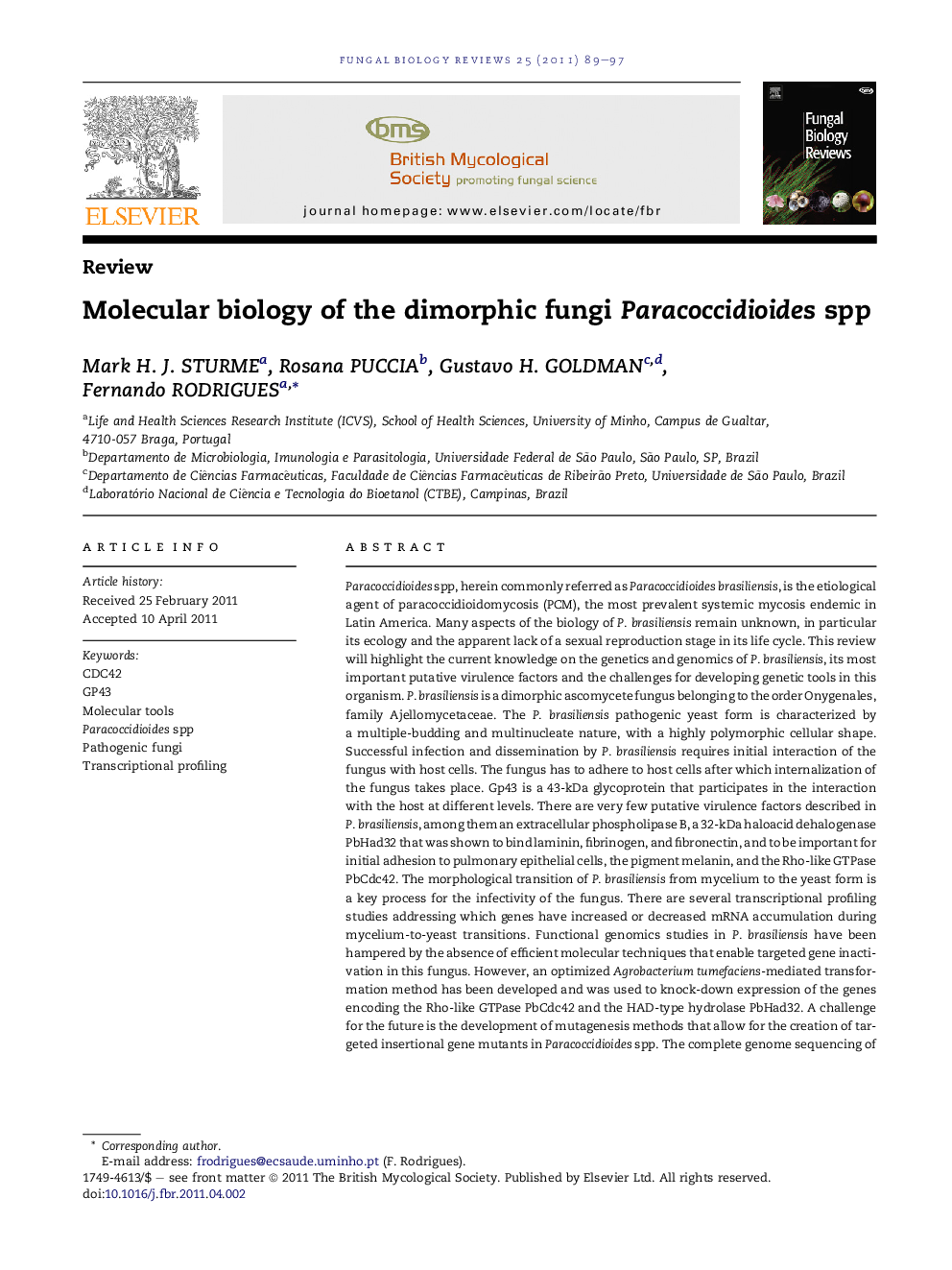| کد مقاله | کد نشریه | سال انتشار | مقاله انگلیسی | نسخه تمام متن |
|---|---|---|---|---|
| 2180607 | 1095188 | 2011 | 9 صفحه PDF | دانلود رایگان |

Paracoccidioides spp, herein commonly referred as Paracoccidioidesbrasiliensis, is the etiological agent of paracoccidioidomycosis (PCM), the most prevalent systemic mycosis endemic in Latin America. Many aspects of the biology of P. brasiliensis remain unknown, in particular its ecology and the apparent lack of a sexual reproduction stage in its life cycle. This review will highlight the current knowledge on the genetics and genomics of P. brasiliensis, its most important putative virulence factors and the challenges for developing genetic tools in this organism. P. brasiliensis is a dimorphic ascomycete fungus belonging to the order Onygenales, family Ajellomycetaceae. The P. brasiliensis pathogenic yeast form is characterized by a multiple-budding and multinucleate nature, with a highly polymorphic cellular shape. Successful infection and dissemination by P. brasiliensis requires initial interaction of the fungus with host cells. The fungus has to adhere to host cells after which internalization of the fungus takes place. Gp43 is a 43-kDa glycoprotein that participates in the interaction with the host at different levels. There are very few putative virulence factors described in P. brasiliensis, among them an extracellular phospholipase B, a 32-kDa haloacid dehalogenase PbHad32 that was shown to bind laminin, fibrinogen, and fibronectin, and to be important for initial adhesion to pulmonary epithelial cells, the pigment melanin, and the Rho-like GTPase PbCdc42. The morphological transition of P. brasiliensis from mycelium to the yeast form is a key process for the infectivity of the fungus. There are several transcriptional profiling studies addressing which genes have increased or decreased mRNA accumulation during mycelium-to-yeast transitions. Functional genomics studies in P. brasiliensis have been hampered by the absence of efficient molecular techniques that enable targeted gene inactivation in this fungus. However, an optimized Agrobacterium tumefaciens-mediated transformation method has been developed and was used to knock-down expression of the genes encoding the Rho-like GTPase PbCdc42 and the HAD-type hydrolase PbHad32. A challenge for the future is the development of mutagenesis methods that allow for the creation of targeted insertional gene mutants in Paracoccidioides spp. The complete genome sequencing of three isolates of Paracoccidioides species provides the opportunity to perform more complete evaluations of the transcriptomic and proteomic data, and to understand the biology and virulence of these important pathogenic fungi.
Journal: Fungal Biology Reviews - Volume 25, Issue 2, July 2011, Pages 89–97